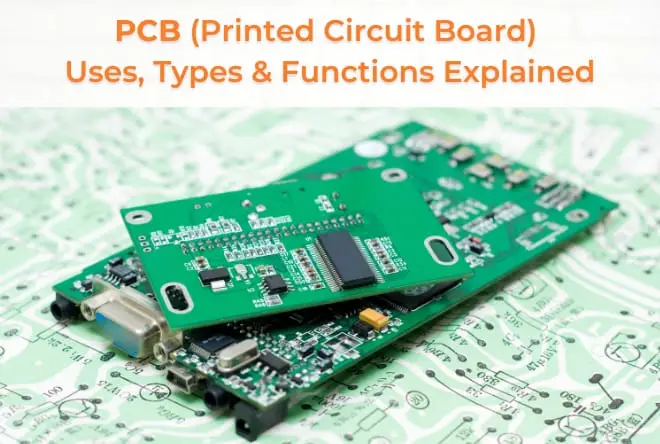Choosing a power supply’s one of the crucial thing nowadays while building a PC. In this article, we will cover what is a modular power supply it types of non modular power supply used for computers.
There are many factors to consider when purchasing a PSU, from power, efficiency to cable management, but before that, we need to consider the modularity of the component.
I will explain the importance and types of modular and non modular power supplies as well as what advantages one has over the other so that you can choose the one that best suits your computer equipment.
First, Let’s get to know:
What is a Modular Power Supply?
A modular power supply is an electronic device, inbuilt cable with few attached or fully detached presents in a PC case, responsible for supplying electrical energy to essential PC elements like motherboard, processor, HDD, SDD, cooling fans, etc., through a connecting a power supply unit.
In other words, it distributes the voltage power throughout the computer system. It usually looks like a metal box, located in the corner or bottom of the computer case.
There are two types of modular power supply:-
- Semi Modular Power Supply.
- Full Modular Power Supply.

1. Semi Modular Power Supply
The semi-modular power supply is those units in which the built-in wire cables are for the connection of only the main components of the computer such as motherboard, processor, and video card.
Along with dedicated cables, SATA cables, and sometimes an additional PCIe cable is modular options. Here, the cables are limited and attached permanently to the body of the power supply, not so the rest of the cables.
The semi-modular power supply has both detachable and non-detachable cables. This means that you can attach cables separately that can be connected or disconnected as necessary to mount the equipment or not, as per your additional requirements for the other units of the computer.
While the ATX and CPU, mandatory in all equipment, they cannot be disconnected. Semi modular power supplies have main cables such as 24-pin, 8-pin, and PCIe cables, all connected to the same board. The photo of semi modular supply is given below.

Advantages of Semi-Modular Supply:
Disadvantages of Semi-Modular Supply:
2. Full Modular Power Supply
All the cables in the case of a fully modular power supply are disconnected. The fact is that there are simply no cables built into the fully modular unit since they are supplied separately.
There are need cables additionally for the modular power supply plug each wire into its own socket, thereby supplying the power to all either standard or essential computer components. This means you can connect and disconnect any computer unit whenever necessary.
The presence of such a unit will allow you to install it even in a miniATX case without losing space in the system unit. This indicator is justified by the fact that manufacturers create such blocks, placing only the necessary “stuffing” inside and of excellent quality.
In the given photo below, you can see the Full modular power supply.

Advantages of Full Modular Supply
Disadvantages of Full Modular Supply
- Typically, the cost of a modular power supply is more expensive than a regular one. This is the biggest drawback of a full modular PSU.
What is a Non Modular Power Supply?
Non-modular power supplies look and work the same as other modular power supplies. Still, the main difference between is that in modular power supply units have few cables attached or fully detached cables while in non modular power supply all cables are soldered.
They are widely used even in server systems.
The cables are fixed to the internal circuit of the source, and they exit through a small hole in the back to be mounted on a computer, since its fixed means that all cables are integrated into it and cannot be removed as we show you in the image.

Advantages of Non Modular Power Supply
Disadvantages of Non Modular Power Supply
Conclusion:
All the significant points that impact the modularity of power supplies have been explained above. Anyway, Power Supplies are continually being upgraded, and accordingly their connection methods, it is time to give the final recommendation.
In those scenarios where you are trying to save pennies to get the best processor or graphics card, it makes sense to opt for a budget non-modular PSU. A semi modular PSU is also a fine choice, but if If you have a large budget, go for a fully modular PSU.
Fact ~ The power supply units in the 1st generation of computers were very huge can occupy an entire room.
FAQs
What does it mean when a power supply is modular?
Either partly cables attached to the supply unit for connection or fully detached cables and connections through separate wires via socket. Such cables availability of PSU is called a modular power supply.
What is the difference between a modular and non-modular power supply?
The main difference is that; modular power supply units have either few cables attached or fully detached cables, while in non-modular power supply, all wires are soldered.
What do you do with the wires that you don't need in a non-modular power supply?
If there is no use of some wries in the PSU, you can cover or protect them with a cap to prevent short circuits and fold them far removed.
What is the advantage of a modular power supply?
The best advantage of a modular power supply is you can configure the cables as per your need and like and the modular power supply enhances the appearance and airflow of the computer case.
Do modular power supplies come with cables?
Only semi-modular power supplies come with cables, while fully modular power supplies don’t come with cables. In this case, you need to buy separate cables for the connection.
I hope this article helped you figure out ‘what is modular power supply?’ and ‘non modular power supply?’ along with types, advantages, and disadvantages. Don’t forget to share on social networks.




